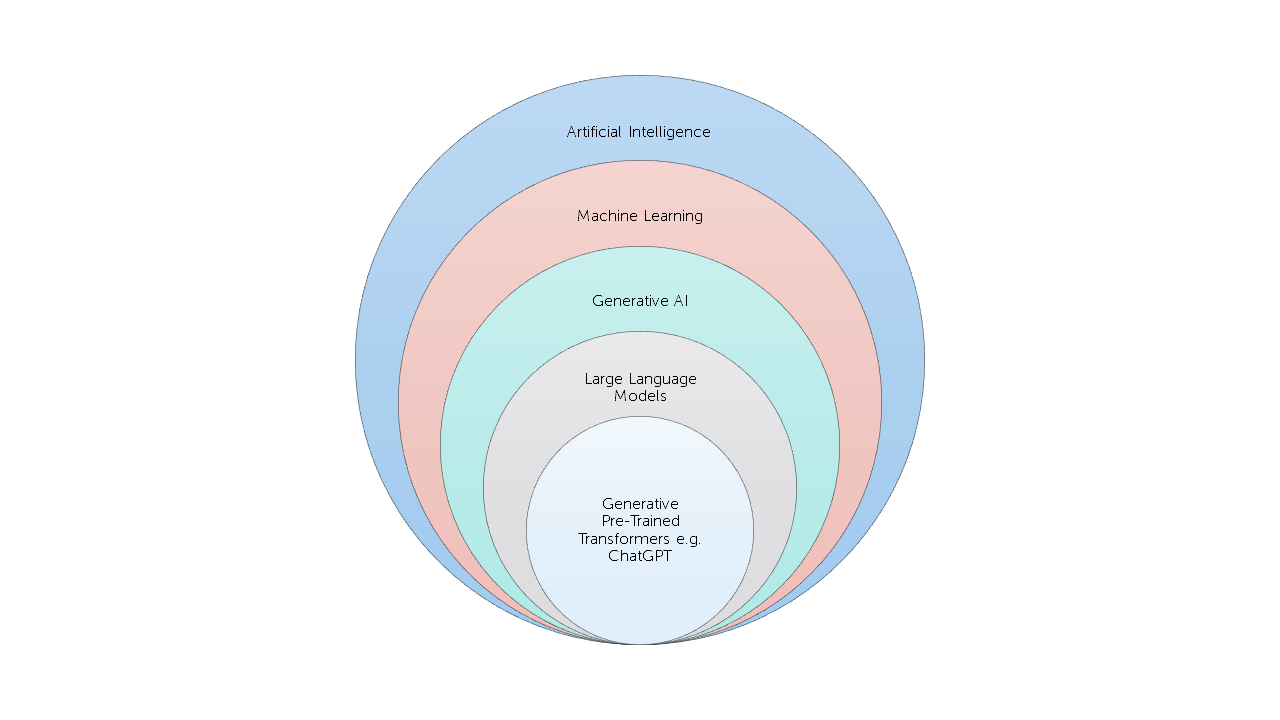Glossary
| Artificial Intelligence (AI) | The simulation of human intelligence in machines that are programmed to think and learn like humans. |
| Artificial Neural Network | A computer system inspired by the human brain's structure and functioning, composed of interconnected nodes (aka neurons) arranged in layers, that is used for various AI tasks. |
| Bias (in AI) | Systematic errors or inaccuracies in AI models that lead to unfair or discriminatory outcomes. Bias can often result from biased training data - the algorithm generates results that exhibit systematic prejudice because of flawed assumptions within the AI process. |
| Chatbot | A computer program that uses NLP techniques to simulate conversation with human users. Chatbots are often used for customer support or informational purposes. |
| Deep Learning |
A subset of machine learning that simulates human neuron systems through using artificial neural networks with multiple (at least three) layers to extract higher-level features from data and achieve more complex tasks. Two main types of deep learning are discriminative deep learning and generative deep learning. Deep learning algorithms train machines by learning from examples. Industries such as health care, eCommerce, entertainment, and advertising commonly use deep learning |
| Discriminative Deep Learning | A subset of deep learning where the focus is on the model learning to discriminate or classify input data into different categories or classes. |
| Generative AI / Generative Deep Learning | A subset of deep learning AI that creates entirely new data or content based on the learnings it has gained from ingesting vast amounts of information. Where discriminative deep learning classifies or discriminates among pre-defined categories, generative deep learning models are trained to generate new data instances that mimic the patterns and characteristics of the original dataset, but are themselves new content. |
|
Generative Pre-trained Transformer (GPT)/ChatGPT. |
A series of generative large language models designed for natural language processing tasks, which have been widely used for various applications such as text generation, language translation and question answering. A well-known example is ChatGPT, an application created by OpenAI that allows for interactive and conversational tasks. |
| Hallucinations / Overfitting | Outputs generated by a machine learning model that are false or misleading. Results from the model being overtrained on a dataset to the point where it memorises the specific examples rather than learning general patterns and features (Overfitting). Consequently, the outputs do not correspond to reality or are not based on the input data |
| Large Language Model (LLM) | A subset of deep learning that uses large amounts of data and parameters to process and understand natural language. This allows LLMs to generate human-like text, answer questions, translate languages, and perform a various language-related tasks. |
| Text-to-speech (TTS) | TTS is a type of NLG associated with converting text to speech in natural voices. A common example is a machine reading a prepared piece of text |
| Machine Learning (ML) | Machine learning is an application of Artificial Intelligence that empowers systems to learn from extensive datasets and tackle specific challenges. It operates using computer algorithms that automatically enhance their efficiency through experiential learning. |
| Model | A representation of a system or process used to make predictions or decisions based on input data |
| Natural Language Generation (NLG) | Focuses on text generation, or the construction of text in English or other languages, by a machine and based on a given dataset |
| Natural Language Processing (NLP) | The field of AI that enables machines to understand, interpret, and respond to human language in a way that is both meaningful and useful |
| Prompt | A specific input or instruction provided to a language model to initiate a task or generate a response |
| Reinforcement Learning |
Reinforcement learning is a branch of machine learning focused on guiding intelligent agents to make decisions in an environment, aiming to maximise cumulative rewards. It is one of the fundamental machine learning paradigms, along with supervised learning and unsupervised learning. Reinforcement learning finds practical applications in planning tasks, such as autonomous driving, where actions like path planning, parking, dynamic pathing, and more can be achieved through reinforcement learning techniques. |
| Semi-Supervised Learning | A combination of supervised and unsupervised learning, where the model is trained on a partially labelled dataset. |
| Supervised Learning | A type of machine learning in which the model is trained on a labelled dataset, with input-output pairs provided, to learn to make predictions on unseen data |
| Test Data | The data used to evaluate the performance of an AI model |
| Training Data | The data used to train an AI model |
| Transfer Learning | A technique in which knowledge learned from one task or domain is applied to a different but related task or domain to improve performance |
| Turing Test | A test proposed by Alan Turing to assess a machine's ability to exhibit human-like intelligence, usually through natural language conversations. |
| Underfitting | A model that is too simple to capture the underlying patterns in the data, resulting in poor performance on both training and new data. |
| Unsupervised Learning |
A type of machine learning where the model is trained on an unlabelled dataset and tasked with finding patterns and relationships within the data without explicit guidance. |





